Norton have risen from the ashes once again, TVS purchased the company and have started manufacturing the new Commando 961. Check out what Cathcart thought. Photos: Kel Edge.
Norton is in the process of being reinvented by the management team recruited by TVS, the Indian manufacturer which acquired the bankrupt company in 2020 from the ashes of former CEO Stuart Garner’s 12-year ownership. Check out the new Commando 961!

Norton has been revived once again. Alan took the two latest Commandos for a spin to see if they still have that famous Norton charm.
The £16m purchase price TVS paid the liquidator included the manufacturing package – such as it was – for the marque’s iconic Commando model, which in 961cc guise formed the basis of Norton production throughout the Garner years, from its March 2010 debut onwards. Production was however sporadic over the next decade owing to a lack of capital, and it’s believed that only around 2,500 Commandos, including the short-run Domiracer, Dominator and California versions, were built during Garner’s tenure of the company.
Having invested a further £40m in establishing and equipping a new state-of-the-art Norton Motorcycles factory on the outskirts of Birmingham, where the marque was originally born 125 years ago next year, the TVS-appointed management team led by Norton CEO Dr. Robert Hentschel have now re-engineered the Commando 961 to enhance its appeal and make it series production-friendly.
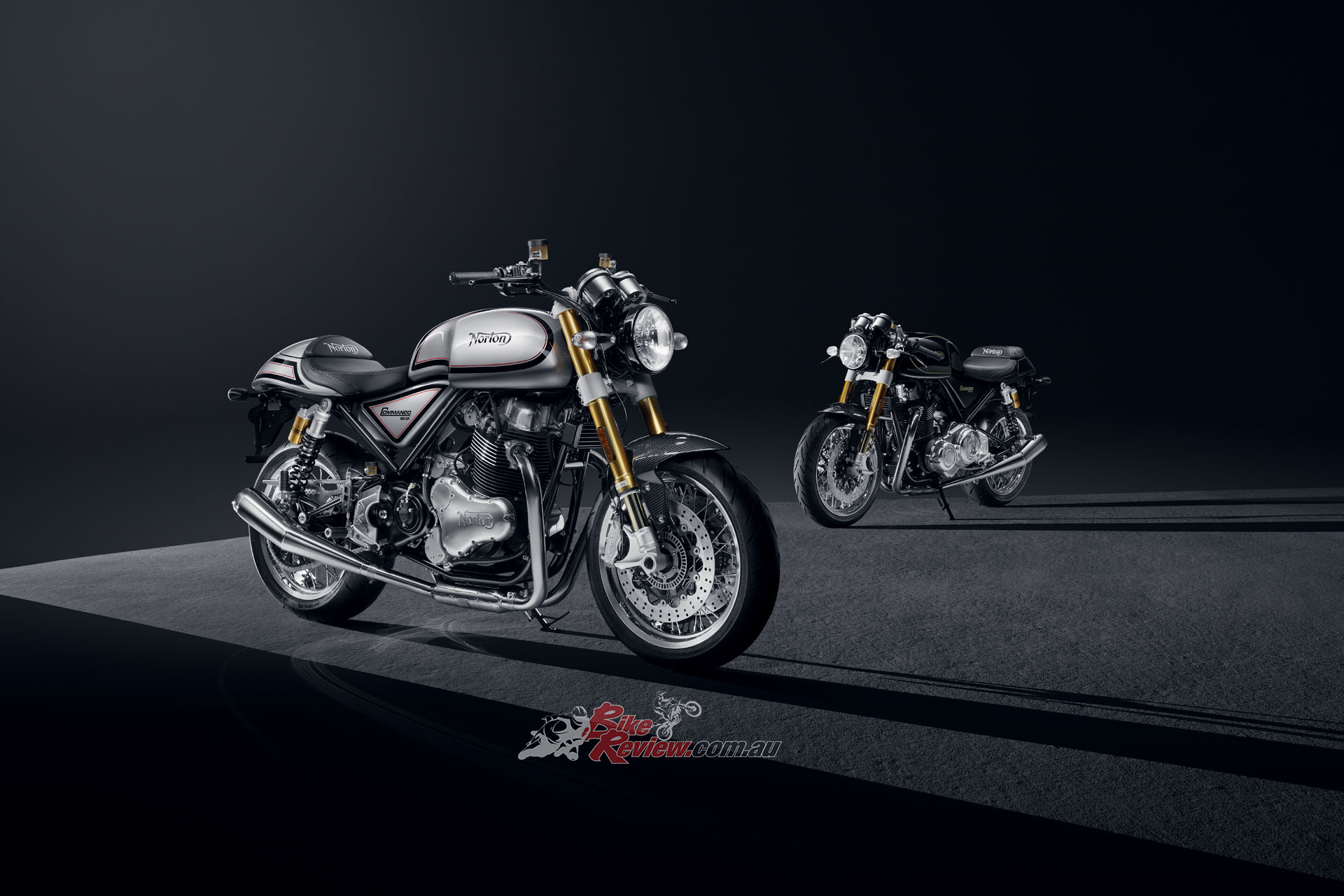
The TVS-appointed management team led by Norton CEO Dr. Robert Hentschel have now re-engineered the Commando 961 to enhance its appeal and make it series production-friendly.
This involved what’s described as ‘an extensive quality improvement programme’ to redress the many faults identified in the Garner-era platform, so that Norton is now producing a version 36 per cent of which is completely new by content, with circa 350 components either changed or redesigned.
Garner-era Norton bikes
And even though it was under no legal obligation to do so, TVS has authorised Norton to build a batch of Commando 961 Classic models for delivery at no additional cost to the 29 customers who had paid Garner’s now defunct company for their bikes, before launching the updated model to the general public, as the first new series production Norton model under TVS ownership.
“TVS has authorised Norton to build a batch of Commando 961 Classic models at no additional cost to the 29 customers who had paid Garner’s now defunct company for their bikes.”
The born-again Commando 961 is available in two different versions, the SP/Sport and the CR/Café Racer priced in the UK at £16,499 and £16,999 respectively, including 20 per cent local tax. This compares well with the £16,495 list price for the last Commando 961 I rode back in 2018, Garner’s limited edition California version with high ‘Western bars’ celebrating the Commando’s 50th birthday, and indeed the two new TVS-era models are distinguished from each other by their aluminium handlebars and matching brake hoses.
The CR has moderately raked billet aluminium clip-ons wrapped around the fully-adjustable 43mm Öhlins USD fork below the cast aluminium upper tripleclamp, whereas the SP employs a taller one-piece taper-section ‘bars mounted on the 40mm risers incorporated in that version’s dedicated upper tripleclamp. The 810mm high seat on either bike is low enough for most riders to place both feet on the ground at stops, and also won’t be too high for shorter riders to feel at home on, thanks to the way the seat is waisted just behind the fuel tank.
Both models are available in two colour options pinstriped by hand, Matrix Black and Manx Platinum – the latter essentially a Manx Norton livery. Each comes fitted with 17-inch wire wheels with polished alloy rims, while the SP in Matrix Black only is also available as an option with matt black rims. These carry Dunlop Sportmax GPR 300 rubber, the rear a 180/55-section number. There’s essentially no other difference between the two bikes besides their price.
The chance to spend a day riding both versions around the Warwickshire countryside where I cut my biking teeth allowed me a hands-on assessment of the improvements Norton claim to have wrought to the bikes under TVS ownership.
These country lanes interspersed with fast stretches of highway full of daunting turns and demanding hills come close to being motorcycling nirvana, and were once the preferred test ground for riders from Norton’s Bracebridge St. factory in Birmingham, just seven miles/10km away from its present home, where they’d rev it up with their fellow testers from the neighbouring BSA, Ariel and Triumph firms.
As the only person to have ridden every iteration of the Commando 961, from American engineer Kenny Dreer’s embryo 952cc prototype in 2004, through his later 961cc update which forms the basis of the bikes Norton is making today, to each variant of the Garner era from 2010 to 2020, I was eager to see if I could discern any noticeable improvement over the last of those bikes I rode back in 2018.
“As the only person to have ridden every iteration of the Commando 961… I was eager to see if I could discern any noticeable improvement over the last of those bikes I rode back in 2018.”
Both 2023 models are powered by the same evolved version of Norton’s vertically-split air/oil-cooled OHV 961cc dry sump parallel-twin motor with two valves per cylinder, a 44.5mm inlet and 39mm exhaust. Measuring 88 x 79mm, and running a 10.1:1 compression ratio, this now delivers a claimed 57.27kW@7,250rpm, with torque peaking at 6,300rpm, when 81Nm is on tap.
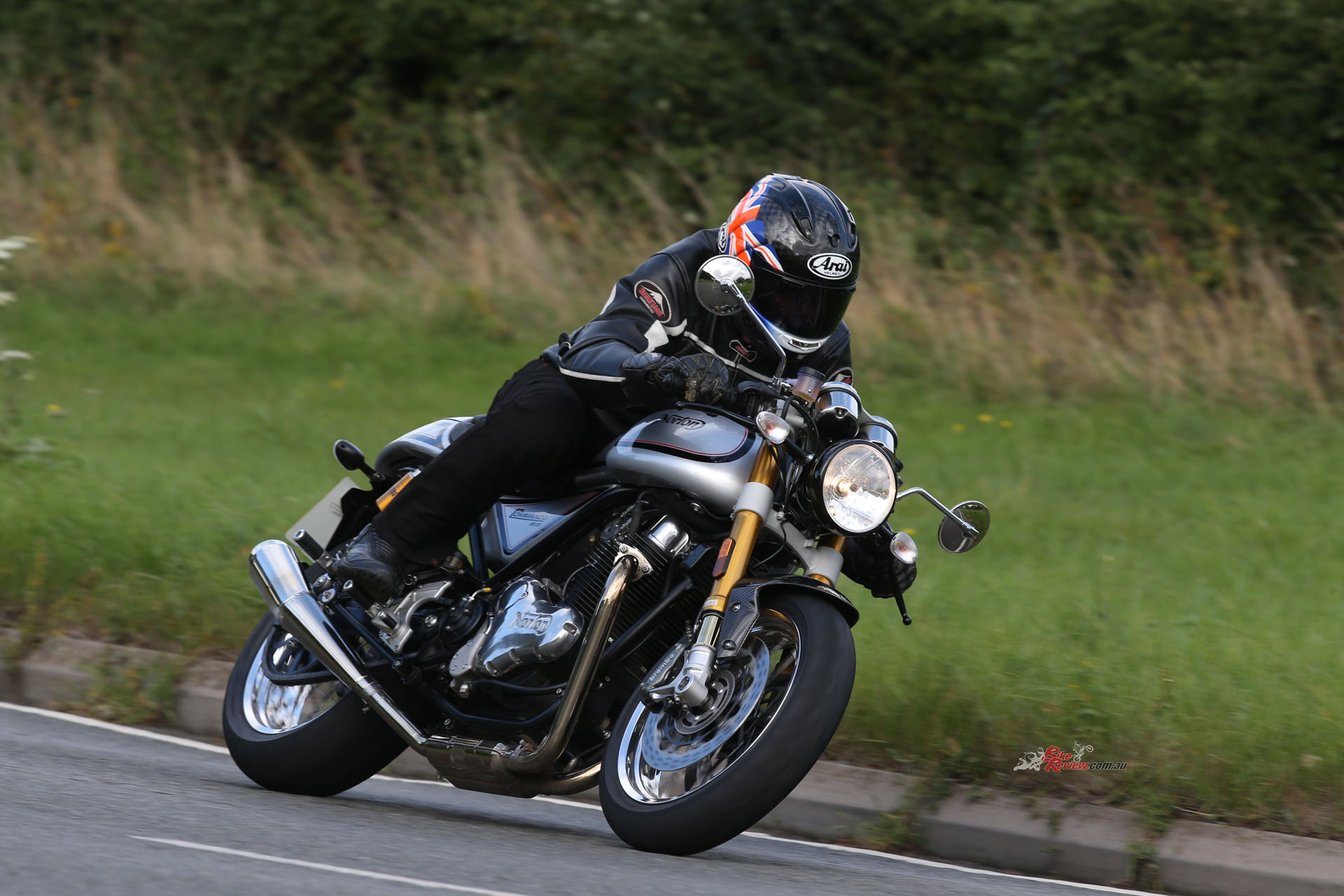
Power is down compared to the 2018 model, but vibrations and production-friendly design was added to the list…
That’s slightly down on the 59.7kW and 90Nm output claimed for the Garner-era bikes’ Mark II version of the Commando engine introduced in 2016 that was quite a significant evolution of the original 961 design, as the motor now weighing 80kg was retooled almost in its entirety. This meant new crankcases, new cylinders, a new cylinder head, new pistons, new crankshaft, and a new gearbox, all mainly to reduce noise, Vibration and harshness. Where appropriate, these are die-cast components instead of sand-cast, delivering a superior and more consistent product versus previous models.
While retaining all these uprated major components TVS-owned Norton now claims to have taken that process of refinement even further, citing examples such as engine durability significantly improved owing to a re-engineered valve-train, as well as increased robustness of the camshaft making it less susceptible to wear. The cam-chain guide’s design has been improved, removing the previous issue whereby its bolts would relax, with consequent terminal engine damage, while sealed electrical connectors have now been standardised to ensure no water gets in the electrical system. Changes have been made to the crankcase breather system to reduce the amount of oil carry-over during sustained high-speed running, while engine calibration changes have been implemented to improve reliability, power delivery and the overall riding experience.

“The gearchange which was problematic on all Garner-era bikes has been redesigned, with a focus on a slicker shift via new gearchange rods, and improved durability.”
The gearchange which was problematic on all Garner-era bikes has been redesigned, with a focus on a slicker shift via new gearchange rods, and improved durability thanks to enhanced material hardness. Numerous detail changes aimed at improving component durability and overall quality have been implemented to the chassis and the 15-litre fuel tank, including a new cush-drive rubber. 350 new or altered parts is a lot of tweaking!
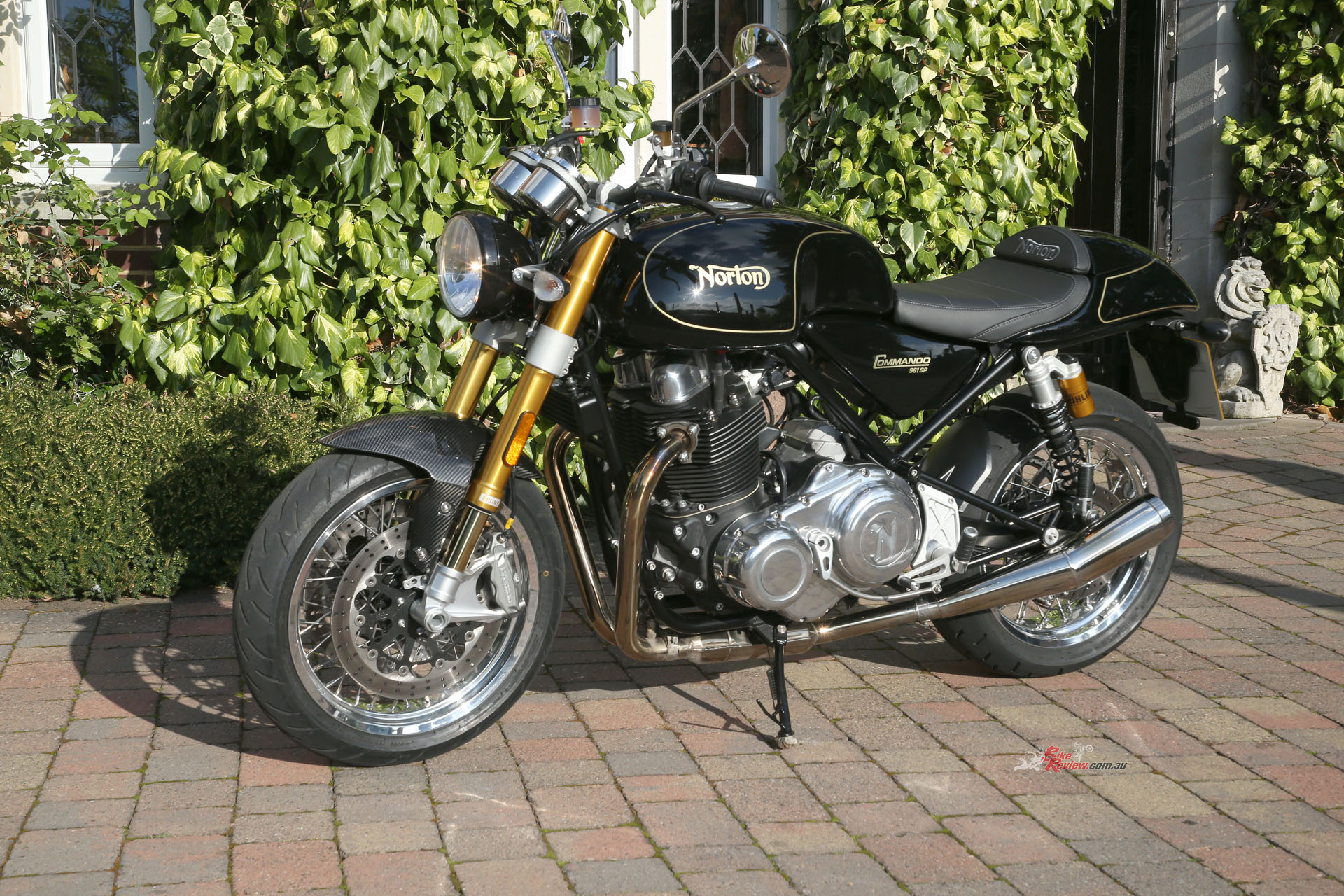
“It’s immediately obvious when you see the new models that Norton has improved their overall build quality versus the Garner era bikes.”
It’s immediately obvious when you see the two new models side by side that Norton has improved their overall build quality versus the Garner era bikes, with a notable sense of craftsmanship that’s reinforced by a walk through the factory floor to watch the frames being manufactured, and the bikes carefully hand-assembled.
The 2023 Commando platform retains the previous chrome-moly tubular steel duplex cradle frame, still with a fabricated backbone doubling as the oil tank for the dry-sump OHV pushrod motor. This is hand-made in-house at Norton via TIG and MIG welding, and retains the same steering geometry as before on both models, with the Öhlins 43mm USD fork that’s adjustable for preload, compression and rebound damping set at a 24.5º rake with 99mm of trail, and delivering the same 1400mm wheelbase.
The twin Öhlins piggyback rear shocks are likewise fully adjustable, while the Brembo brake package sees fully-floating 320mm steel discs gripped by four-piston Monoblock radial calipers, with a 240mm rear disc and two-piston caliper, and twin-channel Bosch ABS, albeit not the lean sensitive type.

“The engines in both bikes I rode seemed to have the same great torque as the Commando 961 engine’s always had.”
Crank the powerful starter motor, and the undeniably butch-looking engine with its cylinders slightly inclined forwards purposefully rumbles immediately into life, settling to a throbbing 1,400rpm idle via the 2-1-2 exhaust handcrafted like the chassis in-house at Norton. The engine is only Euro 4 compliant at present, meaning each bike must be individually certified for UK sale under the IVA system, though Norton CCO Christian Gladwell states that Euro 5 compliance will shortly be secured, allowing future Commandos to be sold in the EU and elsewhere.
But the engines in both bikes I rode seemed to have the same great torque as the Commando 961 engine’s always had, but with the revised 2023 mapping delivering a smoother, more linear if no less muscular power delivery up to the 8,000rpm limiter, so that the Norton just keeps on pulling almost to the redline.
“There are no rider aids, no traction control, no engine modes and no quickshifter. This is an analogue motorcycle that’s straightforward in its appeal: what you see is what you get.”
However, best of all in many ways is the fact that pickup from a closed throttle, as when you get back on the gas exiting a second or third gear bend, is completely linear – there’s no sign of a jerky snatch or brusque response taking you places you didn’t want to go to as soon as you crack the throttle open again. There’s a very refined feel to the Norton’s fuelling at all times, but there are no rider aids, no traction control, no engine modes and no quickshifter. This is an analogue motorcycle that’s straightforward in its appeal: what you see is what you get.
Despite the gear-driven counterbalancer fitted there’s still a little vibration, especially above 5,000rpm, but it’s quite contained thus insufficient to be annoying, and there’s still the same great punch as before in the gears. Anyway – sorry, Norton, in terms of your plans to go electric big time from 2024 onwards, but I don’t want an electric motor powering my ride down Retro Road just yet. I want a few vibes aboard a Commando, so thanks for those! Low down fuelling is good, like when you’re just crawling along in a line of traffic – but then spot a gap and gas it up hard, and the Commando catapults you forward in a totally addictive way, thanks to its meaty torque which means it’ll take almost any gear you throw at it.
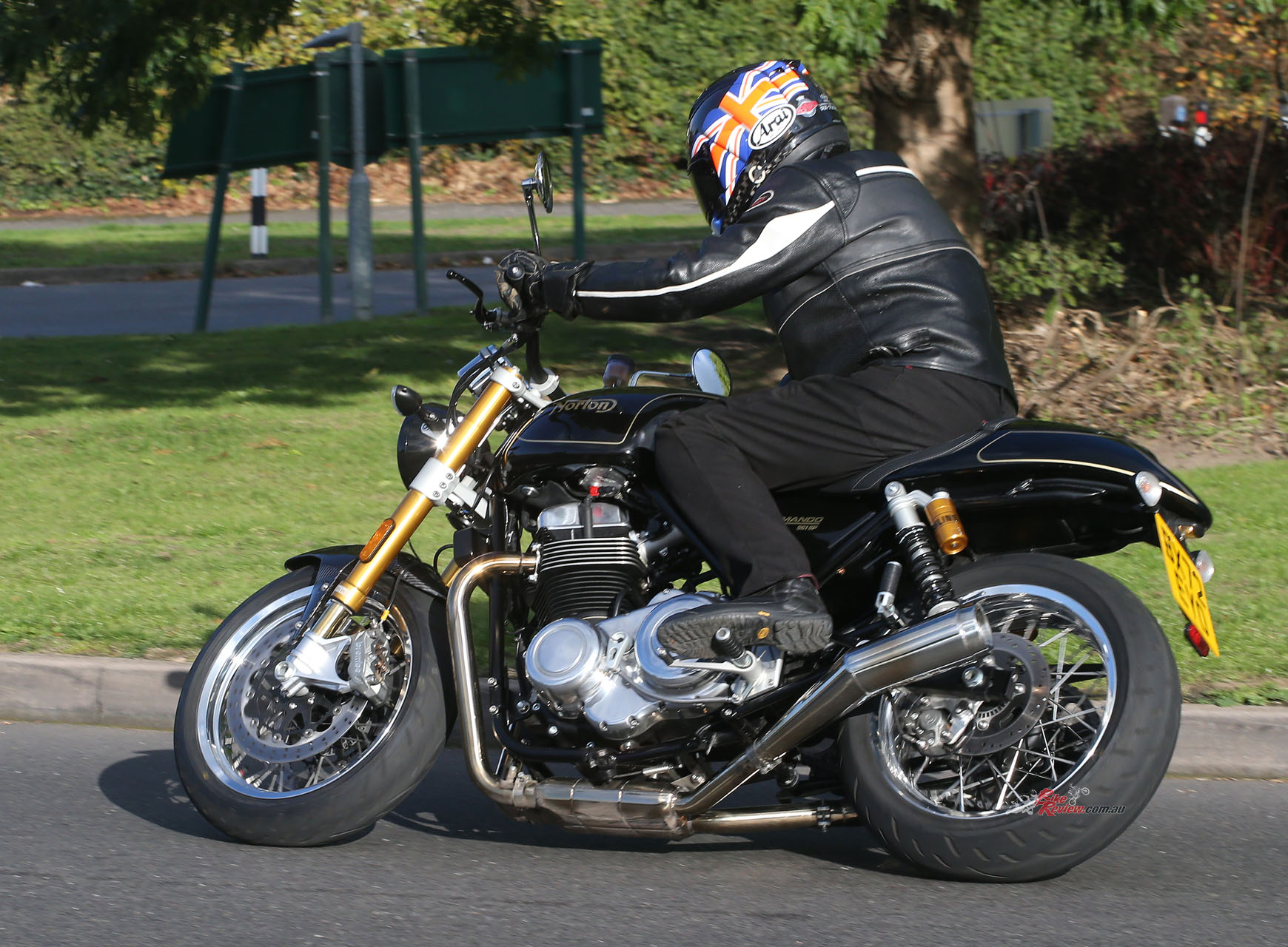
“Low down fuelling is good, like when you’re just crawling along in a line of traffic – but then spot a gap and gas it up hard, and the Commando catapults you forward in a totally addictive way.”
It pulls hard from barely off idle, then even stronger from 2,200rpm upwards – this is a very friendly and usable motor, with 4,000rpm the gateway to more serious urge, and from there to where you can feel the engine peak out at just over 7,000rpm, is the happy zone. There’s no point in revving it out to the revlimiter – just surf that power curve, and ride the waves of grunt. The five-speed transmission doesn’t need a sixth ratio, because the engine has such a wide spread of torque and power you can change gear when you feel like it, not because you must.
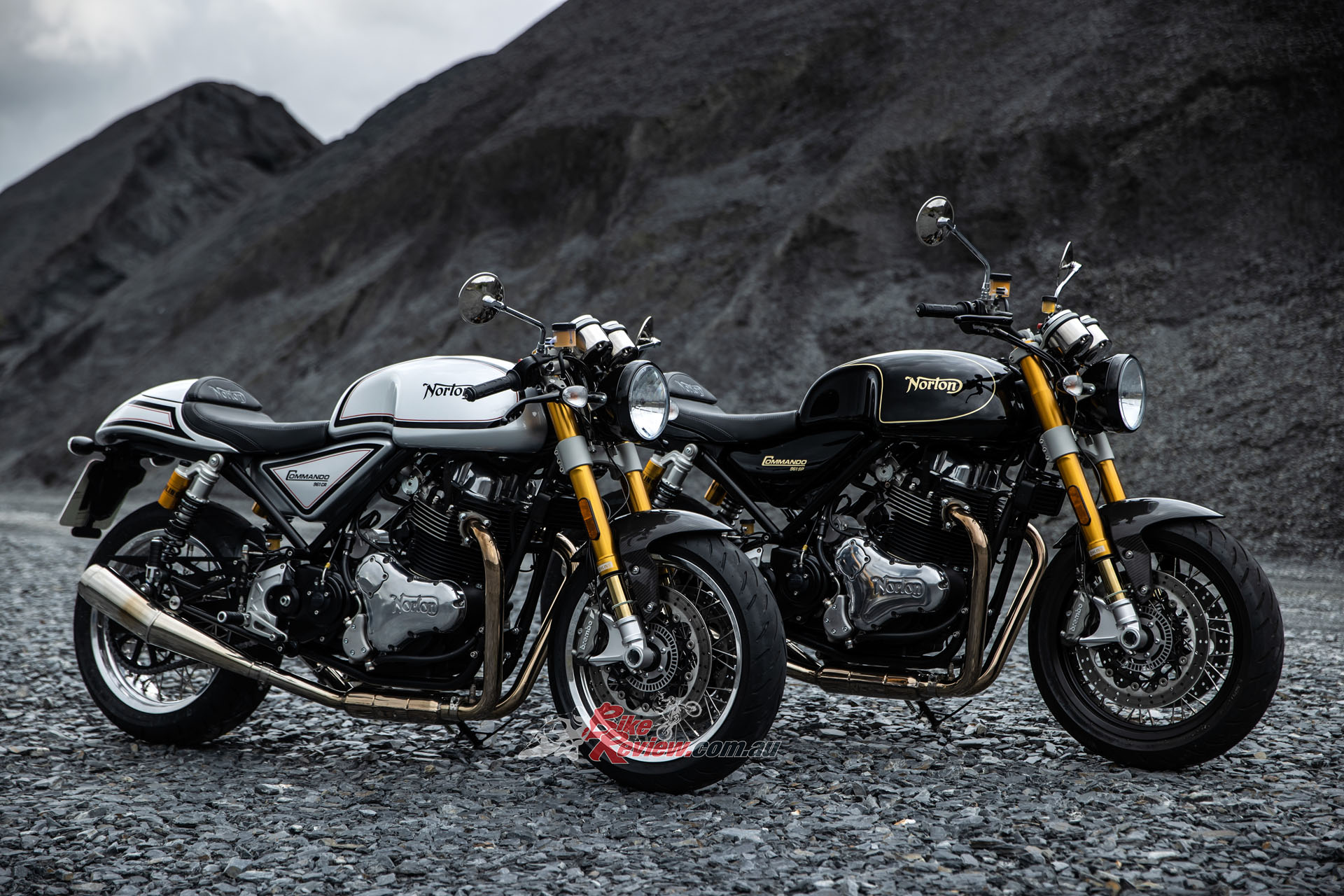
It’s a tough choice between the two colour choices. Both look absolutely stunning, really encapsulating that Norton flavour perfectly.
Its handling has always been a strong point of the Commando 961, and both bikes steered faultlessly, tipping easily and controllably into a turn on the brakes, without falling into the apex when you let them off, as some rivals do. They felt light and agile, yet stable and forgiving – confidence-inspiring motorcycles that you can trust completely over a variety of surfaces, so hitting a bump cranked hard over in a 100km/h downhill fourth-gear sweeper didn’t unsettle the SP model at all. Indeed, the Öhlins suspension on both models just shrugs off bumps, and either Norton held its line well over them, due perhaps to the low cee of gee achieved by the dry sump engine being placed low in the frame, without impacting on ground clearance.
“Its handling has always been a strong point of the Commando 961, and both bikes steered faultlessly, tipping easily and controllably into a turn on the brakes.”
The Brembo twin-disc brake package provides controllable, effective stopping power with just the right degree of sensitivity from the radially-mounted calipers, though you can use a surprising amount of either Norton’s considerable engine braking on offer without getting the rear wheel hopping, even with that normal 1,400 rpm idle speed.
The two different versions on the same retro theme felt very different to ride one than another, though, and that’s obviously due to the contrasting riding positions. The CR’s low-set clipons impose a stretched-out stance as you reach forward across the fuel tank to adopt a chindown riding position that’s ultimately quite tiring – but also feels bloody good fun! It imposes a greater sense of community with the motorcycle, so that you find yourself riding it more intuitively and with a greater sense of purpose, resulting in increased turn speeds and an enhanced sense of enjoyment. It’s also easier to go faster on it if you wish – but sometimes inadvertently so!
160km/h is readily attainable at 6,200rpm in top gear with no real sense of discomfort thanks to the CR’s super-aerodynamic stance. This is a proper old school café racer with modern brakes and suspension. Retro doesn’t come much better than this – the Royal Enfield 650 twins are one level down in capacity and performance, and Triumph’s 64hp/90Nm Speed Twin 900 is tuned quite differently, with quite a bit less horsepower but extra torque – it’s a streetrod rather than a café racer. And anyway, it’s liquid cooled, despite which however at 216kg wet it’s quite a bit lighter than the Norton, which scales a claimed 230kg wet, equating to around 215kg dry, so pretty heavy for an air-cooled one-litre twin.
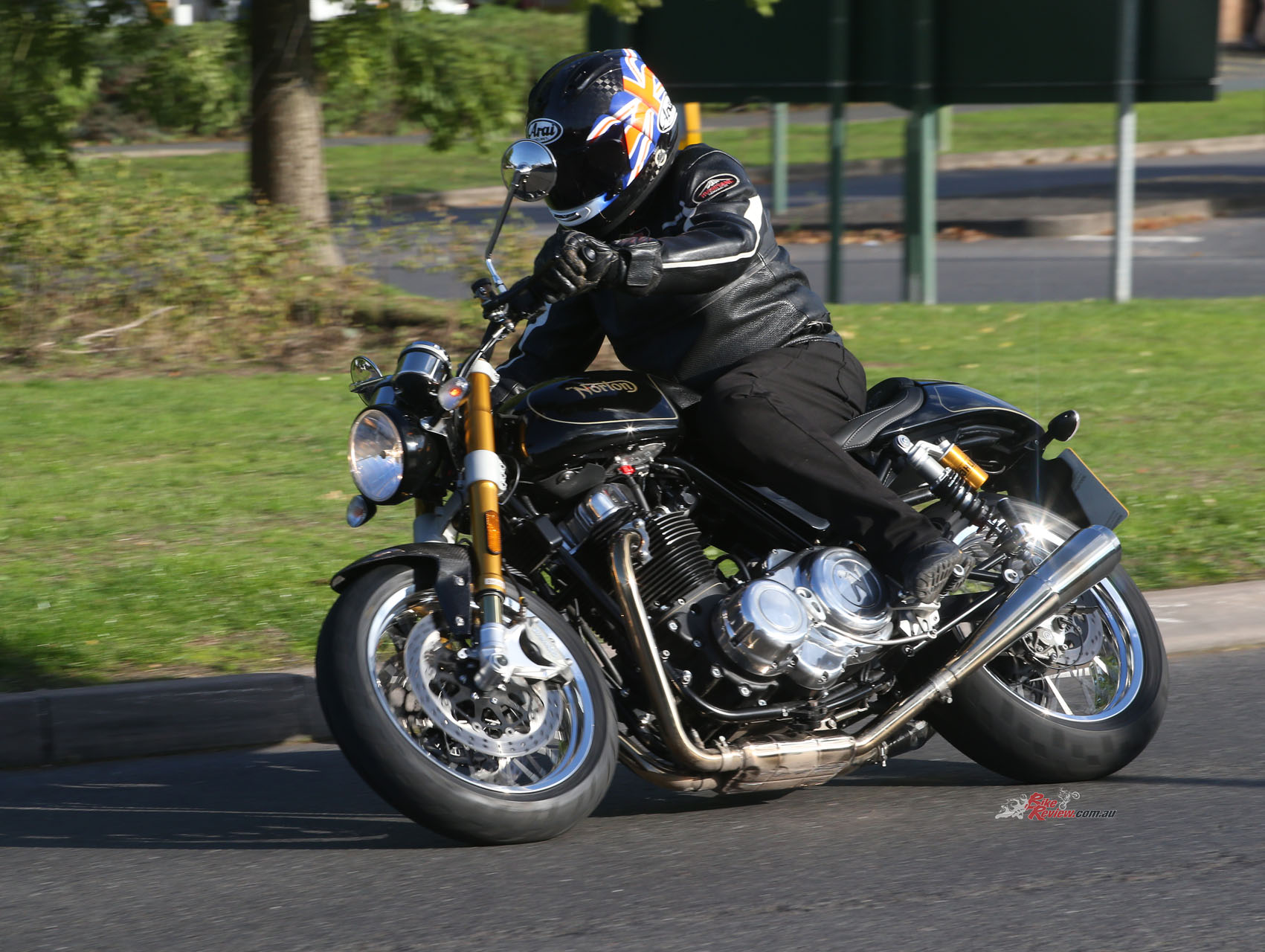
“The Sport version has a much more upright riding stance, I found it a really good ride in town or narrow country lanes.”
The Sport version has a much more upright riding stance, and I found it a really good ride in town or narrow country lanes, where the much more direct-seeming steering afforded by the one-piece handlebar enhanced its agility – it’s a proper Roadster. But it’s also eager to motor, and maybe because I wasn’t leaning so far forward over the fuel tank I could hear the slightly subdued but still satisfyingly rorty exhaust note better than on the CR, complete with pops on the overrun. It’s not the trademark flat drone of a traditional 360° British twin as on Kenny Dreer’s original prototype, more the sound of thunder of an Italian 90° V-twin – or a Triumph, with its nowadays similar 270° crank, but it still thrills the senses and stirs the soul.
The biggest improvement that I noticed on both bikes is that the gearchange which was the bugbear of all Garner-era Commandos has now been fixed, so the shift action is now slick and precise, if slightly heavy – let’s call it a positive change, even if you can now click through the ratios under acceleration without using the clutch. But neutral is still as hard to find as ever at rest – you must try to find it while still on the move.
Other gripes encountered on my day’s ride were few and far between and relatively minor, like the fact the indicator warning light is too dim, and needs more ampage to be clearly seen, even on a dull autumn day. My biggest complaint is a hangover from the Garner and Dreer eras that I’m surprised new Norton hasn’t included in their list of 350+ corrections, and that’s the flip-up footrests which are still just as irritating as they always were. Brushing them with either foot as you depart the scene will leave you scrabbling slightly desperately to find somewhere to park your foot before you have to change gear or use the rear brake.
Dreer’s prototypes both came fitted with these, and Garner maintained them as a legacy of the old AMA rule that said dirt-trackers had to be fitted with them so riders could pick them up again and continue racing if they crashed. Harley-Davidson streetbikes carried these too as a token link with dirt oval racing, and when I first raced at Daytona in the 1980s we had to fit these to our bikes to pass Tech, obliging you to wrap the hinge with racer tape to stop them flipping up at the start of a race, or after a pit stop. I felt like doing the same on these Norton twins, and another downside is there are no hero tabs on them, so the first time you know you’re running out of ground clearance cranked over is when you scrape the exhaust, which is quite meaty enough to lift the back wheel off the ground. Go on, Norton – fit proper solid pegs, please.

“The CR in particular is still a satisfyingly raw and yes, a hard-edged ride – though I have a hard time equating this to the desire of new Norton’s management to drive the marque upmarket into the luxury brand sector.”
But that’s the sum total of my criticisms applicable to a pair of much improved motorcycles which still have hair on their chests compared to anything else on the market today that’s comparable. The CR in particular is still a satisfyingly raw and yes, a hard-edged ride – though I have a hard time equating this to the desire of new Norton’s management to drive the marque upmarket into the luxury brand sector. Surely Norton’s customers for this still admittedly somewhat pricey product are predominantly the wrong side of 40 years old, and more concerned with the thrill of the ride than the retro cool of the bike they’re seen with.
In which case they’ll be more than satisfied with these new Commando models – they’re retro done right, a properly re-engineered, successful re-interpretation of a classic-era design icon, that’s both functionally pleasing and fashionably stylish, while also being completely authentic. They’re the Commando the way it should have been all along, hopefully now devoid of the niggles both major and minor which afflicted too many of the Garner-era bikes, while delivering the same satisfying blend of old and new, a mixture of period chilled-out attitude combined with modern civility and stirring performance.
Civility that comes with brakes that work brilliantly, tyres that warm up sufficiently fast to grip well on a cool autumn day, and suspension that irons out bumps while laying the motor’s hefty torque to the ground with a degree of compliance that makes these very confidence-inspiring bikes so rewarding to ride hard. But with their more refined engineering, improved build quality and presumed reliability obtained by new Norton’s huge dose of investment in revamping them, these new Nortons are well worthy of the iconic Commando name, and their stunning Classic looks are sure to deliver a significant pride of ownership of these products of Britain’s most historic sporting brand.
2023 Norton Commando 961 CR [SP] Specifications
Price: Australian pricing and availability not yet announced
Warranty: N/A
Colours: Matrix Black, Manx Platinum
Claimed Power: 78hp @7250rpm
Claimed Torque: 81Nm@6300rpm
Wet Weight: N/A
Fuel capacity: 15L
Fuel Consumption Claimed: N/A
Fuel Consumption (measured): N/A
Engine: Norton air-oil-cooled pushrod parallel twin with dry sump lubrication, 88mm x 79mm bore x stroke, 961cc, 10.1:1 compression, Crank fired ignition, Electronic fuel injection system. Full stainless steel exhaust system with multiple 3-way catalytic converter. Gearbox: Five speed Clutch: Wet, multiple disc
Chassis: Frame: Hand TIG and MIG welded at Norton HQ
Rake: 24.5 degrees Trail: 99mm
Suspension: 43mm Öhlins upside-down forks – adjustable for preload, compression and rebound damping(f) Öhlins twin shocks with remote reservoir – fully adjustable (r), travel N/Amm.
Brakes: Full Brembo system – twin Brembo 320mm fully-floating high carbon steel discs and Brembo 4-piston Mono Bloc radially mounted calipers with ABS, and Brembo front brake master cylinder (f), Full Brembo system – Brembo 240mm disc and 2-piston caliper with ABS, and Brembo rear brake master cylinder (r)
Tyres: Dunlop Sportmax GPR 300, 120/70 x 17in, 180/55 x 17in
Dimensions:
Seat height: 810mm
Ground clearance: N/A
Overall width: N/A
Overall Length: N/A
Overall height: N/A
Wheelbase: 1400mm
Instruments: Analogue dash.
Editor’s Note: If you are reading this article on any website other than BikeReview.com.au, please report it to BikeReview via our contact page, as it has been stolen or re-published without authority.

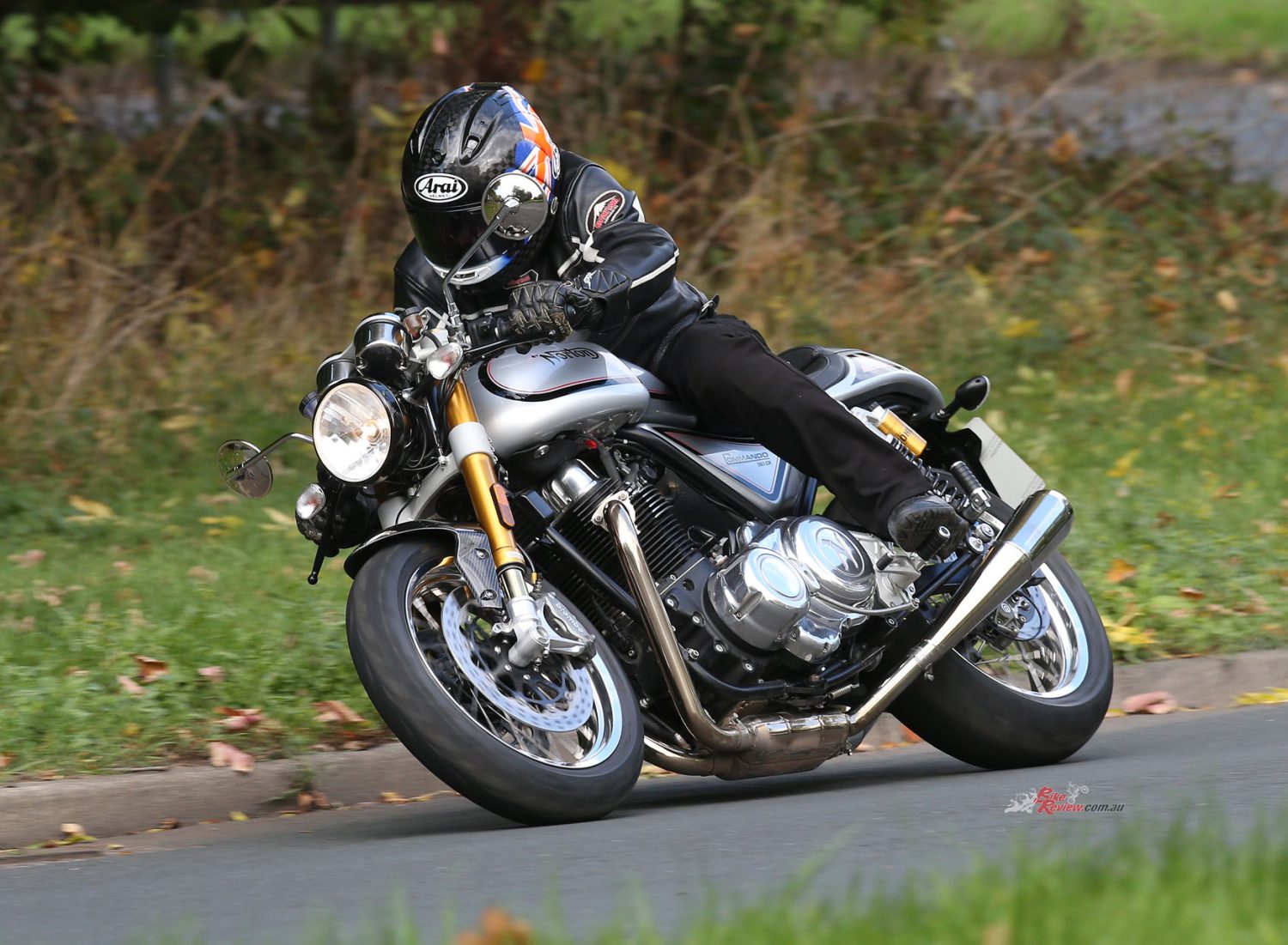


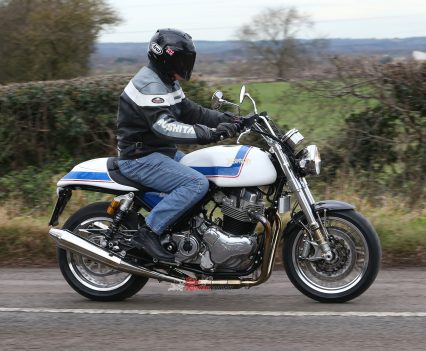
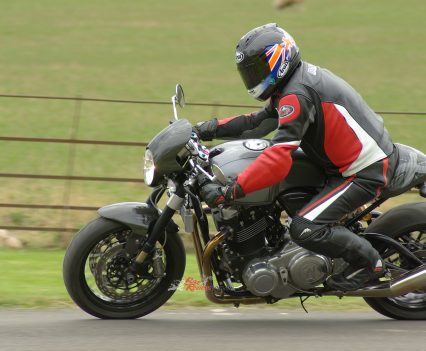
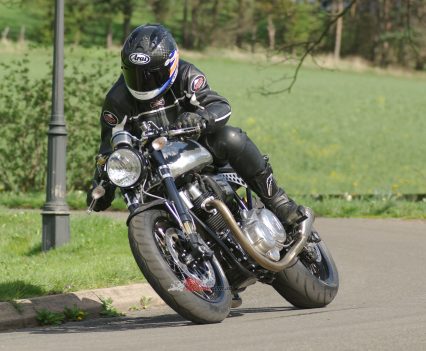
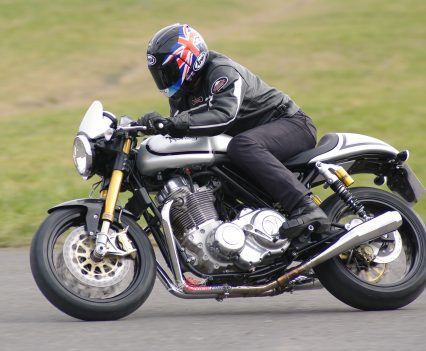
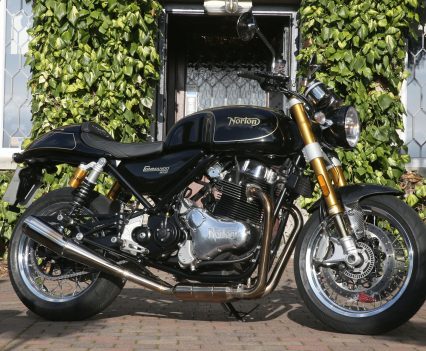
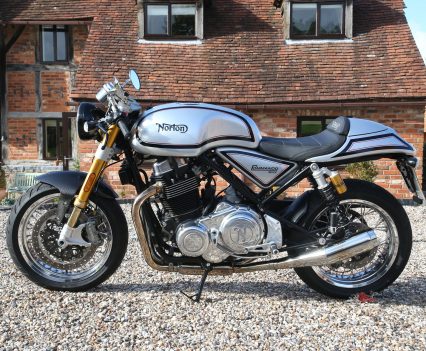

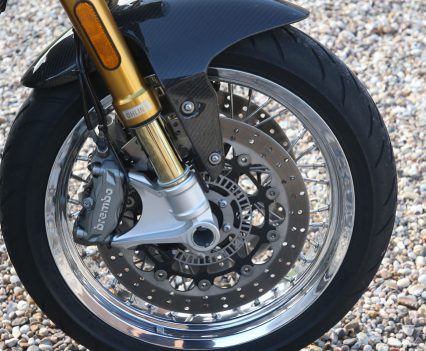
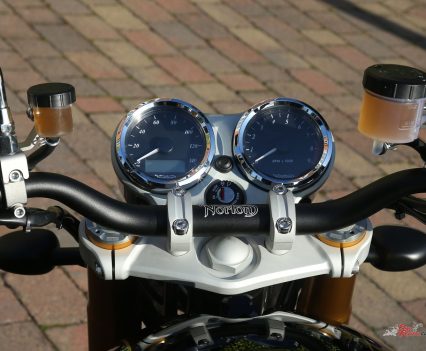
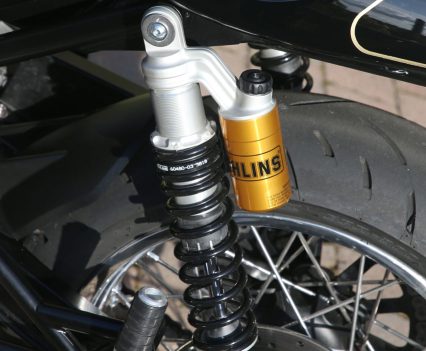


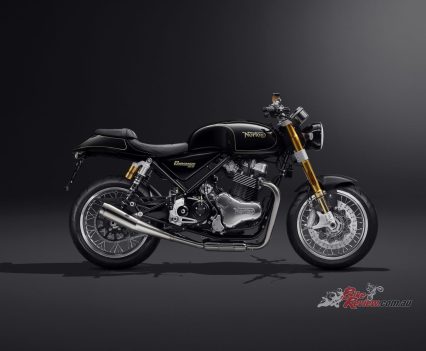

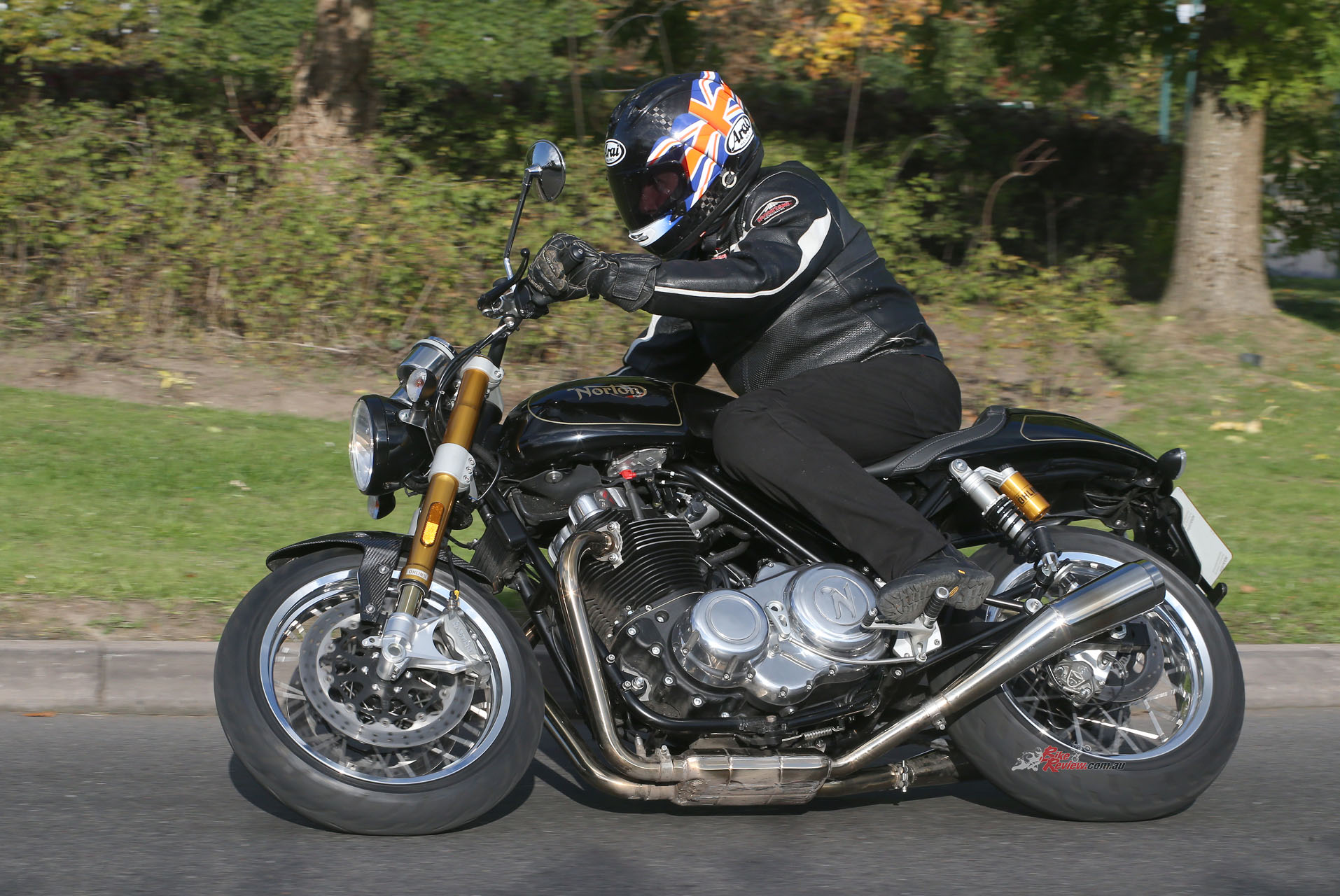
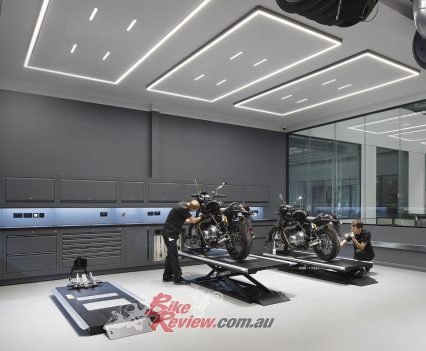
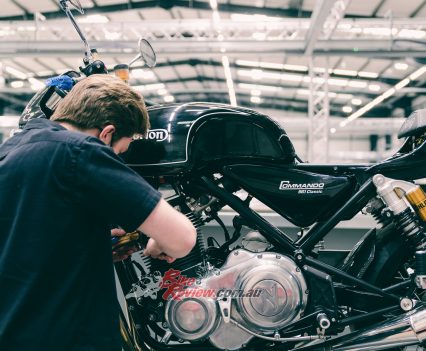
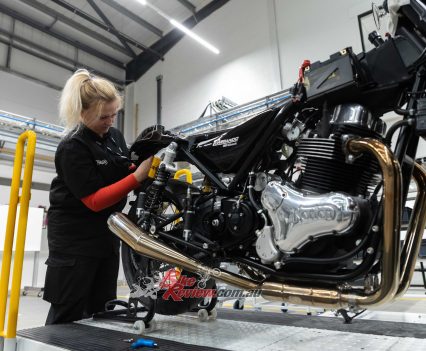

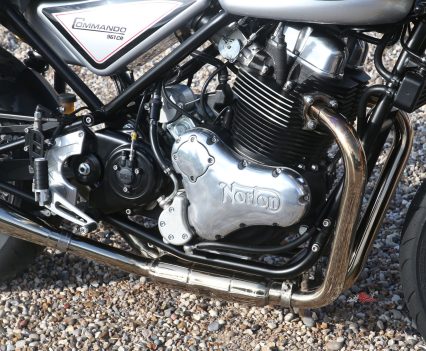
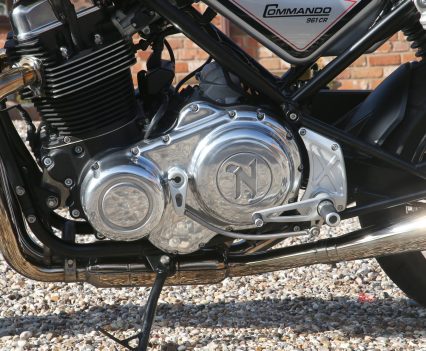

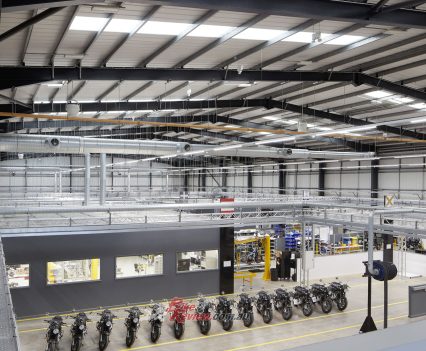
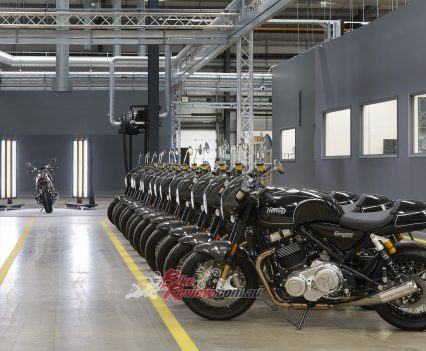
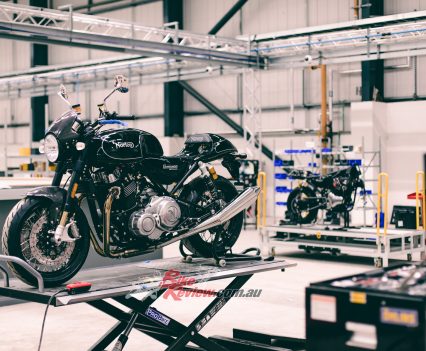

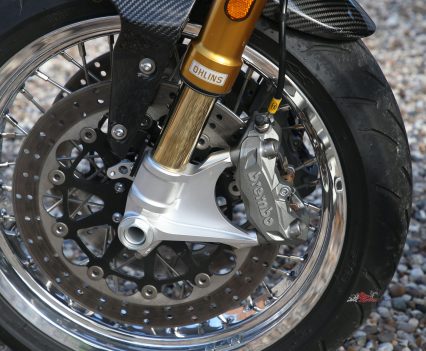
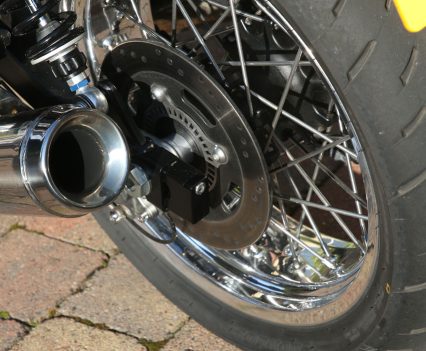

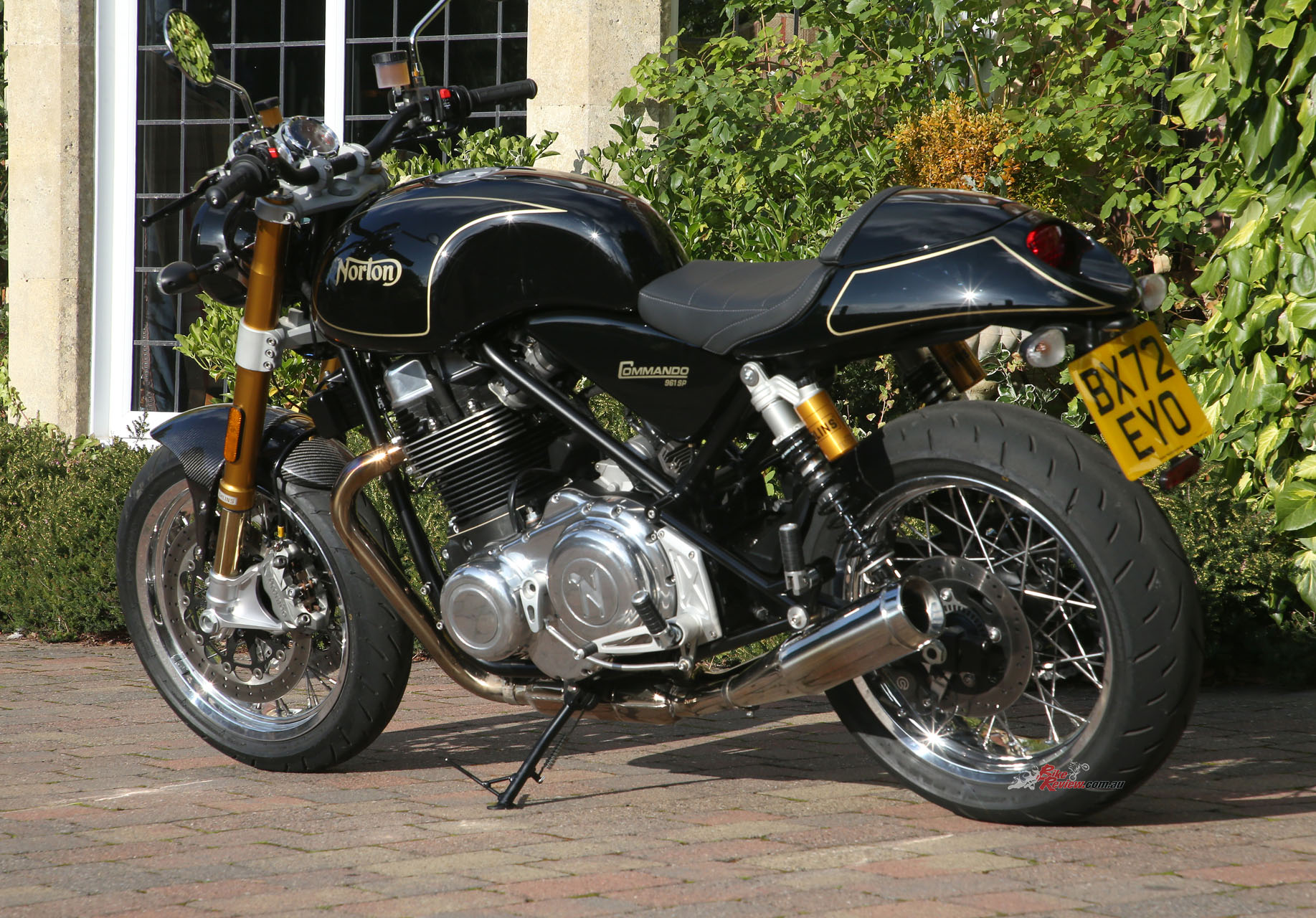

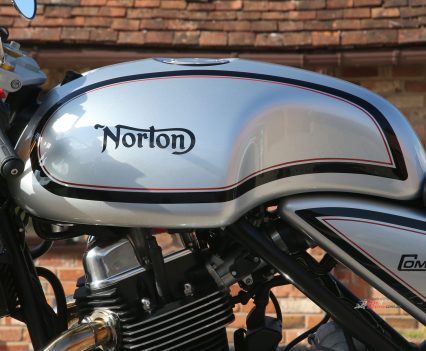

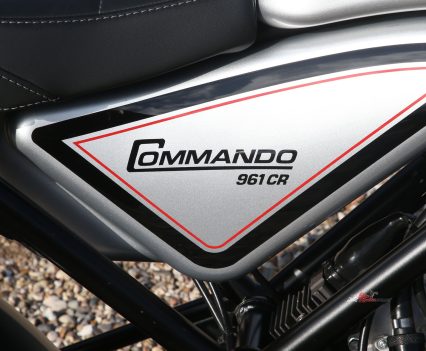

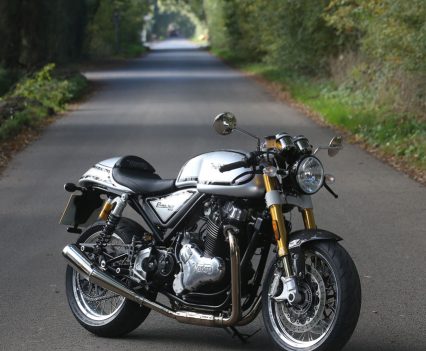
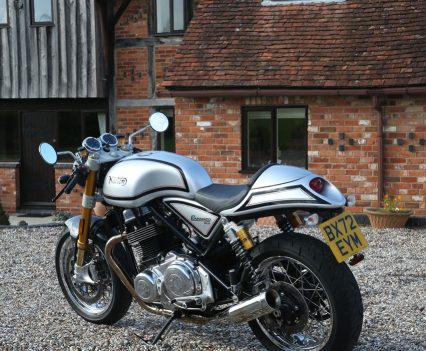
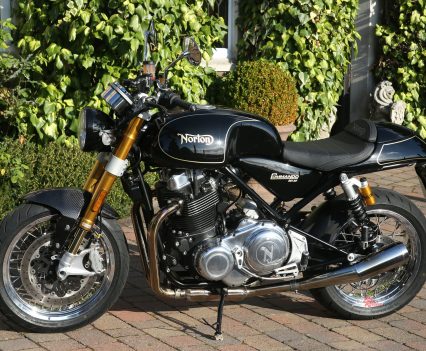
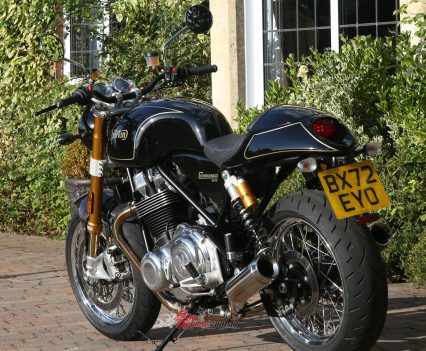

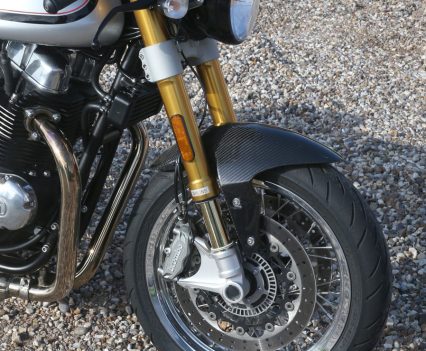
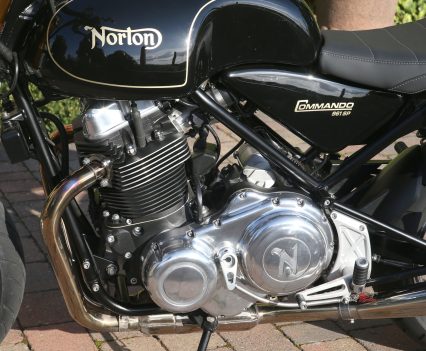

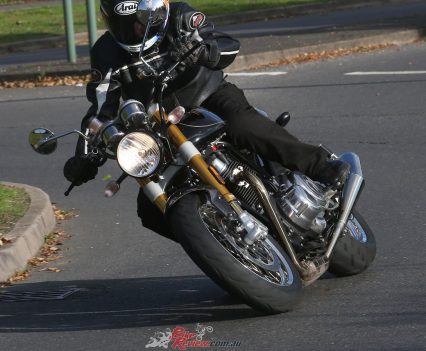



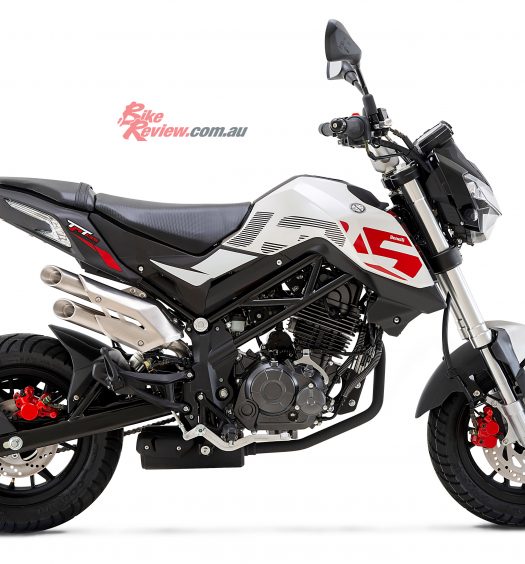






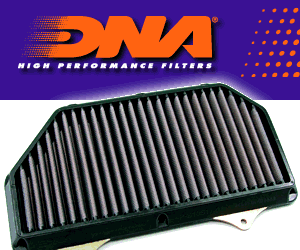







January 7, 2024
I have a 961, the cam chain guide bolts fell out as described by Alan Cathcart.
I only discovered this by chance reading a similar article in a magazine.
I removed engine cover to find guide floating on the chain and when removing sump plate out dropped the bolts. I was lucky no damage to engine and better still no lock up while riding potentially leading to injury or death.
No warning from Norton (question duty of care) the 2500 of us with Garner era bikes are left in the wilderness, no offers of re designed parts, NOTHING.
Lets hope my friend who also has a 961 and is a barrister has no mishaps.
January 7, 2024
Hi if you would a more in depth descriptive article regarding this model and the way in which many owners have been left without recourse, they please feel free to ask.
January 11, 2024
Hi Charles – we have more in depth tests here – including my test (I didn’t like the bike one bit) and some other articles – https://bikereview.com.au/category/by-brand/norton/ Jeff.
January 11, 2024
Wow what a pile of junk. It is such a shame and I feel for all of you owners. Absolute nightmare… Jeff.